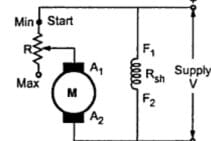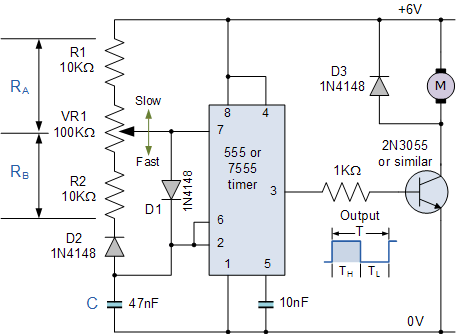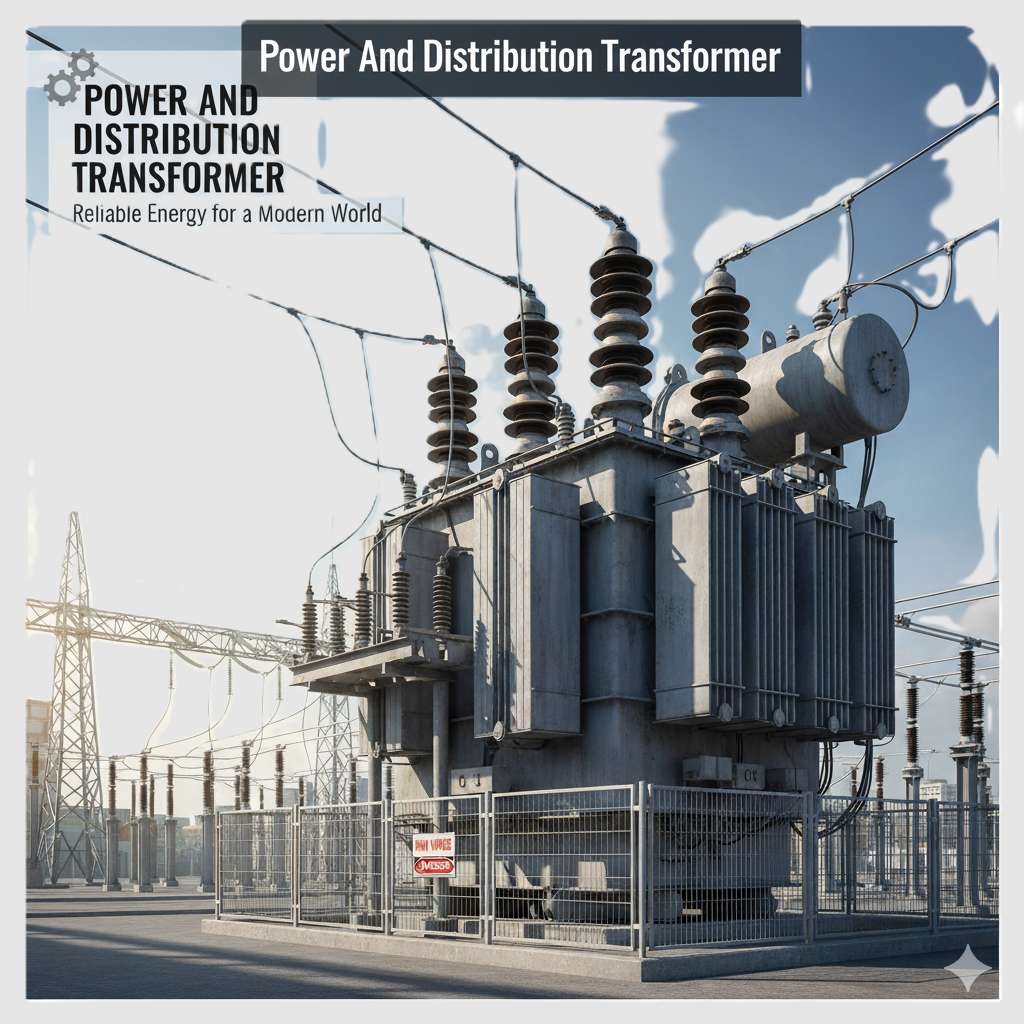Table of Contents
How to Speed Control of DC Shunt Motors:
While controlling the speed of a DC shunt motor may seem like a daunting task, with a little bit of guidance, it can be very simple. This tutorial will break this down step by step with simple language and relevant illustrations.
🔌 A DC Shunt Motor:
A DC shunt motor is a type of electric motor that is powered by direct current. It is labeled a shunt motor due to the fact that the field winding is connected in parallel, or shunt, with the armature winding. The construction of a shunt motor is intended to provide a steady speed performance of the motor throughout varying workloads.
A shunt motor comprises the following two parts:
1. Armature: This is the rotating part of the motor that accepts the current, which generates the motion of the motor. This part is connected to a shaft that rotates with the motor.
2. Field winding (shunt field): This is a stationary part of the motor that supplies a constant magnetic field. It is constructed of coils of wire and is connected in parallel to the armature.
How It Works:
- When current flows into the motor, it splits between the armature and the field winding.
- The field winding generates a magnetic field.
- The armature, located within the magnetic field and carrying current, experiences a force according to the Lorentz Force Law, causing it to rotate.
Why It’s Useful:
- The motor speed remains almost constant, even if the load increases or decreases.
- It’s ideal for machines that require a consistent speed without any variations.
Where It Is Used:
- Lathes
- Fans
- Blowers
- Pumps
- Drilling machines
DC shunt motors are favored for their smooth performance, effective speed control, and straightforward design, making them perfect for educational purposes in electric motor studies.
⏳ Why Do We Need to Control the Speed?
Sometimes we want the motor to run fast, and other times slow. For example:
- A toy car may need slow speed for safety.
- A machine in a factory may need high speed for cutting materials.
⚙️ Methods to Speed Control of DC Shunt Motors
Here are the main methods used for the Speed Control of DC Shunt Motors:
1. Armature Voltage Control Method
Armature Voltage Control Method changes the voltage supplied to the armature terminals of the DC shunt motor. The higher the voltage applied to the armature, the faster the motor spins. Conversely, a lower voltage results in a slower motor speed.

- More voltage = More speed
- Less voltage = Less speed
Armature Voltage Control Method is effective since a DC motor’s speed increases proportionally with the voltage applied to the armature while keeping the field current constant.
How it’s done: To vary the voltage, we use a special type of power supply, such as a variable DC power source or an electronic converter. This allows smooth and controlled changes to the armature voltage without affecting the field current.
Practical Example: Think of a fan with a speed control knob. When you turn the knob, you are adjusting the voltage going to the fan’s motor, making it spin faster or slower.
Where it’s used:
- Electric trains
- Elevators
- Industrial machines that need variable speed
Advantages:
- Smooth and precise control of motor speed
- Good efficiency at various speeds
Disadvantages:
- Requires a variable voltage power supply
- More expensive than simple resistive methods
2. Field Flux Control (Field Weakening)
Field flux control, or field weakening, is a common method that boosts the speed of a DC shunt motor beyond its rated maximum by modifying the magnetic field strength in the field winding.
- Weaker field = Higher speed
- Stronger field = Lower speed
The speed of a DC motor is inversely proportional to the field flux. So, when we reduce the field current (which weakens the magnetic field), the motor spins faster. This is useful when we want to run the motor faster than its rated speed, but it comes with some trade-offs.

How it’s done: A variable resistor, also known as a rheostat, is connected in series with the field winding. By increasing the resistance, we reduce the current flowing through the field winding. A weaker magnetic field means less current.
Practical Example: Imagine pushing a swing. If the wind (magnetic field) is weak, the swing moves faster. If the wind is strong, it slows down. Similarly, a weaker magnetic field lets the motor speed up.
Where it’s used:
- Electric fans
- Textile machines
- Paper mills
Advantages:
- Simple and cost-effective
- Easy to apply to existing motors
Disadvantages:
- Works only for increasing speed above the base level
- Weakening the field too much can cause poor torque and unsafe operation
- Not suitable when heavy load torque is needed
Tip: Always stay within safe limits when weakening the field. Over-weakening can damage the motor or reduce its efficiency.
3. Rheostat in Armature Circuit
Rheostat in Armature Circuit: A rheostat (which is a variable resistor) is placed in series with the armature circuit of the DC shunt motor. By increasing the resistance in the armature path, the voltage across the armature drops. Since the speed of a DC motor depends on the voltage applied to its armature, the motor slows down when the voltage drops.

How it’s done:
- Connect the rheostat in series with the motor armature.
- When resistance increases, less voltage reaches the motor, resulting in a decrease in speed.
- This method is most effective for reducing speed below the motor’s normal operating level.
Practical Example: Consider a ceiling fan equipped with an old-style speed regulator. Turning the dial increases resistance and reduces the fan’s speed. That’s similar to how this method works.
Where it’s used:
- In older fans and machines
- Small workshops and basic setups
Advantages:
- Very simple to implement
- Low cost
- Easy to understand and use
Disadvantages:
- Wastes energy as heat in the resistor
- Not suitable for high-power motors
- Poor efficiency and limited control range
Note: Because of its energy loss and heating issues, this method is less preferred today, but it is still useful for simple and small-scale applications.
4. PWM (Pulse Width Modulation) Controller
PWM is a modern and very efficient way to control the speed of a DC shunt motor. Instead of changing the actual voltage, it switches the power supply ON and OFF many times per second. This creates an average voltage that the motor experiences.
How it works: The power supply sends pulses of voltage to the motor. The width of these pulses (how long they stay ON) changes. This is called “duty cycle.”

- High duty cycle (long ON time) = higher average voltage = higher speed
- Low duty cycle (short ON time) = lower average voltage = lower speed
Why it’s efficient: Since the motor is either fully ON or fully OFF, very little energy is wasted as heat. This keeps the system cool and energy-efficient.
Where it’s used:
- Robotics
- Electric bikes and scooters
- Remote-controlled cars
- Computer fans
Advantages:
- Very energy-efficient
- Precise speed control
- No large heat loss
Disadvantages:
- Needs electronic circuits like transistors and microcontrollers
- May produce electrical noise if not properly filtered
Fun Fact: PWM is also used to dim LED lights and control sound in speakers!
5. Chopper Control
Chopper control is a modern and effective method for controlling the speed of a DC shunt motor. A chopper is a high-speed electronic switch that rapidly turns the supply voltage ON and OFF to provide a pulsed DC voltage to the motor. This results in a variable average voltage applied to the armature, which allows for smooth and efficient speed control.
How it works:
- The chopper circuit rapidly switches the power to the motor on and off.
- By controlling the ON and OFF times (called the duty cycle), the average voltage applied to the motor is varied.
- This changes the motor speed accordingly.
Duty Cycle Example:
- If the chopper is ON for 80% of the time, the motor receives around 80% of the full voltage.
- If it’s ON for 30% of the time, the motor receives about 30% of the full voltage.
Why it’s powerful:
- Unlike resistors, choppers do not waste energy as heat.
- Choppers offer fast response, precise control, and high efficiency.
Where it’s used:
- Electric vehicles
- Industrial machines
- Railway traction systems
- Battery-powered tools and equipment
Advantages:
- High efficiency
- Precise and fast speed control
- Can be easily automated using digital circuits
Disadvantages:
- Requires more complex electronics
- May create electromagnetic interference (EMI) if not properly designed
Note: Chopper circuits are often built using power electronics components like IGBTs or MOSFETs, and are controlled by microcontrollers or embedded systems.
6. Ward Leonard System
The Ward Leonard System is a classic and powerful method to control the speed of a DC motor. It uses three machines:

- A motor (usually an AC motor) that runs continuously.
- A DC generator is connected to this motor.
- A DC shunt motor whose speed we want to control.
Here’s how it works:
- The AC motor drives the DC generator.
- The output voltage from the generator is sent to the DC shunt motor.
- By adjusting the generator’s field current, we can change the output voltage and thus control the motor speed.
This method gives very smooth and wide-range speed control, both above and below the normal speed.
Advantages:
- Good speed regulation (speed stays stable even with load changes)
- Works well for heavy machines like cranes, lifts, and rolling mills
Disadvantages:
- Requires more space and equipment
- Higher initial cost and maintenance
Fun Fact: Even though it’s an old method, the Ward Leonard system is still used in some modern systems that need very precise speed control.
🌌 Applications of Speed Control of DC Shunt Motors
Controlling the speed of DC shunt motors is crucial in many real-world applications, where different tasks require varying speeds. Here are some detailed examples:
- Robots: In robotics, motors need to move with very precise speed and timing. For example, a robot arm picking up objects must move slowly to avoid damage but quickly return to its starting position. Speed control makes this possible.
- Elevators: Elevators need to start slowly, accelerate smoothly, and then decelerate gently before stopping. Speed control ensures passenger comfort and safety while improving energy efficiency.
- Fans and Pumps: In ventilation systems, water pumps, or air conditioners, speed control allows these devices to work only as much as needed. This saves electricity and extends the life of the motor.
- Conveyor Belts: In packaging or manufacturing industries, conveyor belts need different speeds for different stages of production. Speed control helps match the motor speed to the work process.
- Electric Vehicles: The acceleration and deceleration of electric vehicles depend entirely on how well the motor speed is controlled. It also helps in saving battery power.
- Cranes and Lifts: Heavy equipment like cranes needs very slow and smooth motion for precise handling of loads. Speed control makes this safe and manageable.
Advantages and Disadvantages: Speed Control of DC Shunt Motors
| Method | Advantages | Disadvantages |
|---|---|---|
| Armature Voltage | Easy, smooth control | Needs special power supply |
| Field Control | Simple, cheap | Speed range is limited |
| Rheostat | Easy to set up | Wastes energy as heat |
| PWM | Very efficient | Needs electronics |
| Chopper | Fast and efficient | Expensive setup |
| Ward Leonard | Great for large loads | Bulky and costly |
Simple Diagram Example
Here’s a simple diagram showing armature and field winding with a variable resistor:
+ —- Rheostat —- Field Winding —-+ | | | Motor (+) ( ) | | + ————– Armature ————-+FAQ
I am an Electrical Engineer with qualifications in ITI, Diploma, and B.Tech. I have worked as an ITI college instructor for 3 years and have over 5 years of hands-on experience in the electrical field. The information shared on this website is based on trusted electrical engineering textbooks such as P.S. Bimbhra, B.L. Theraja, V.K. Mehta, and real-world practical experience.


